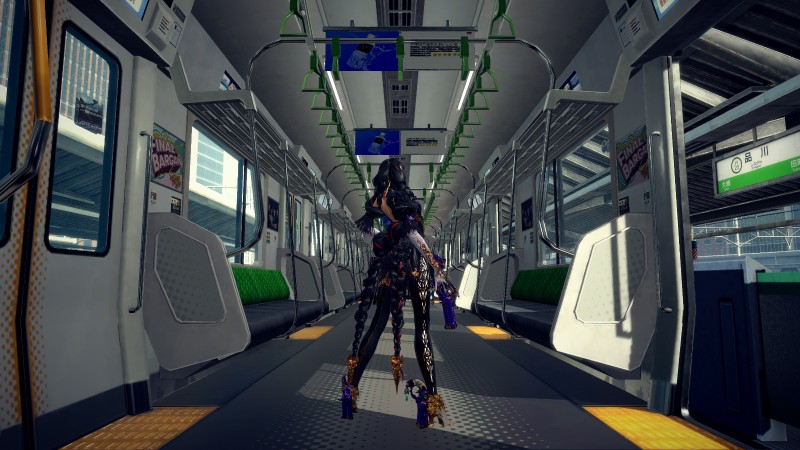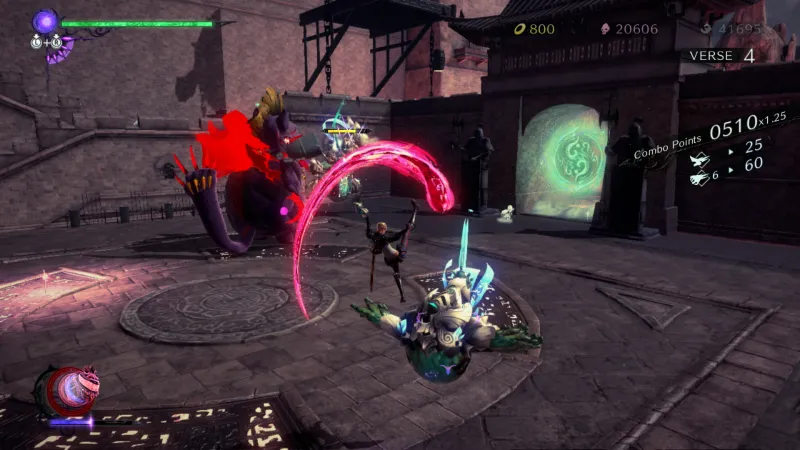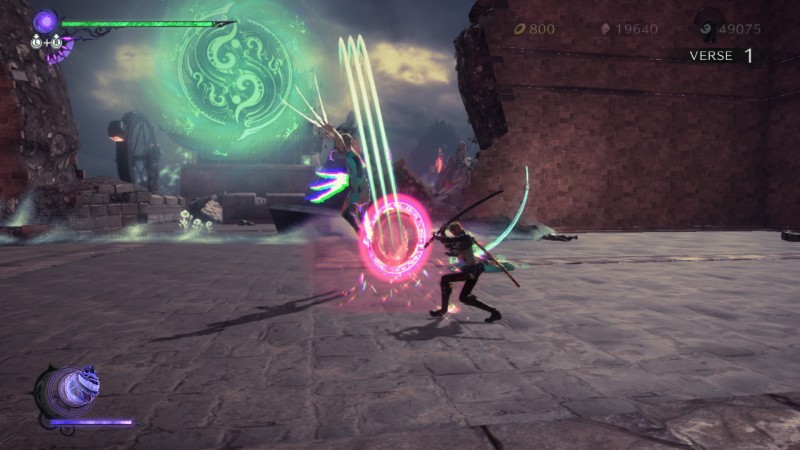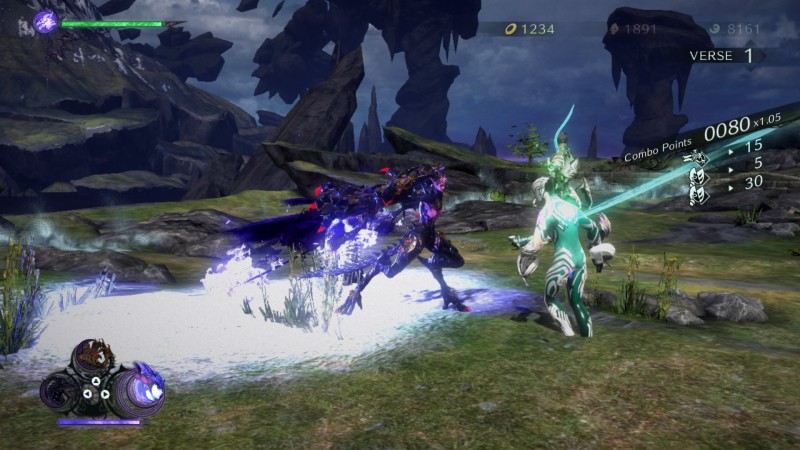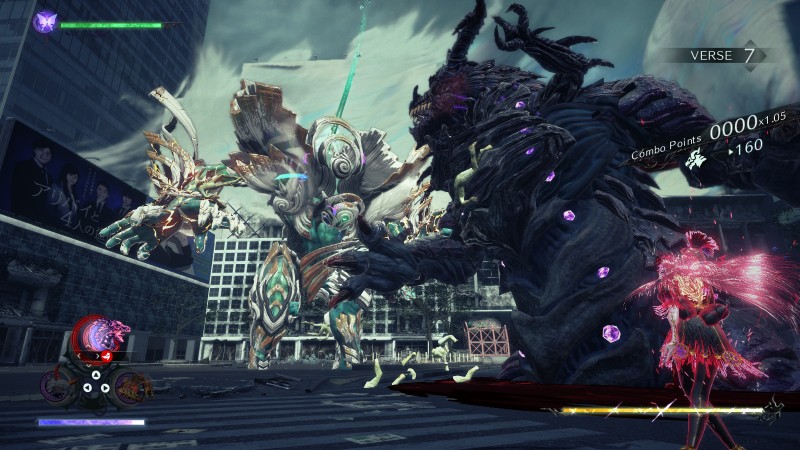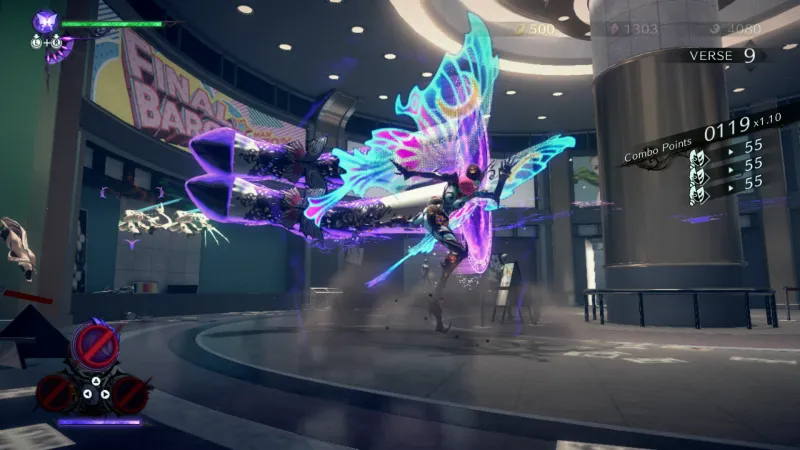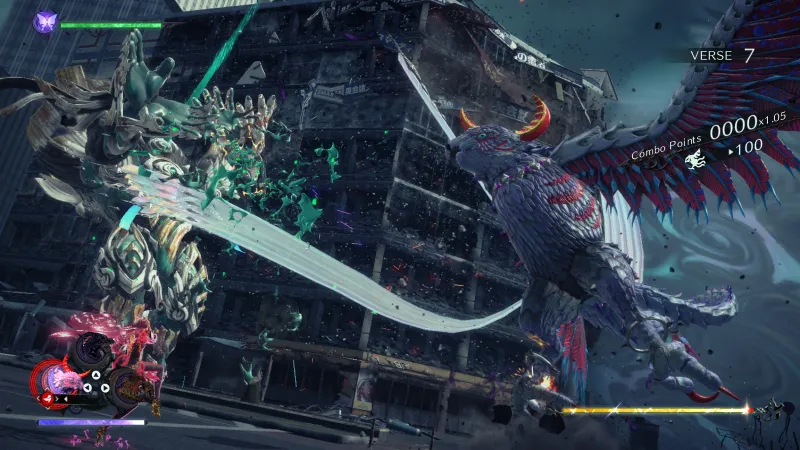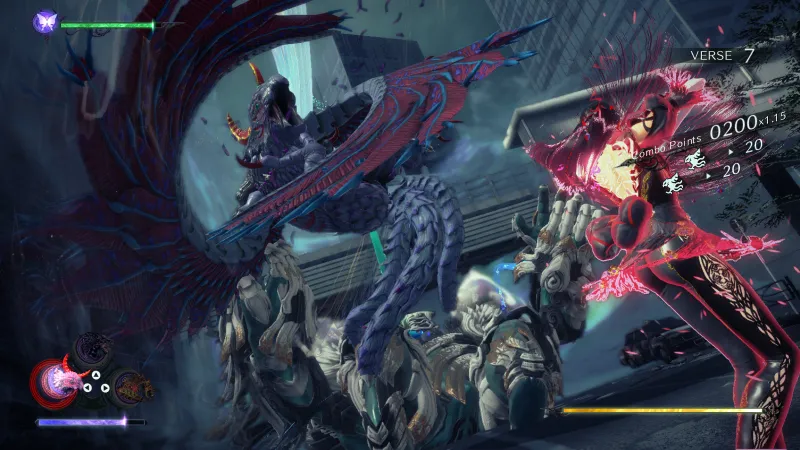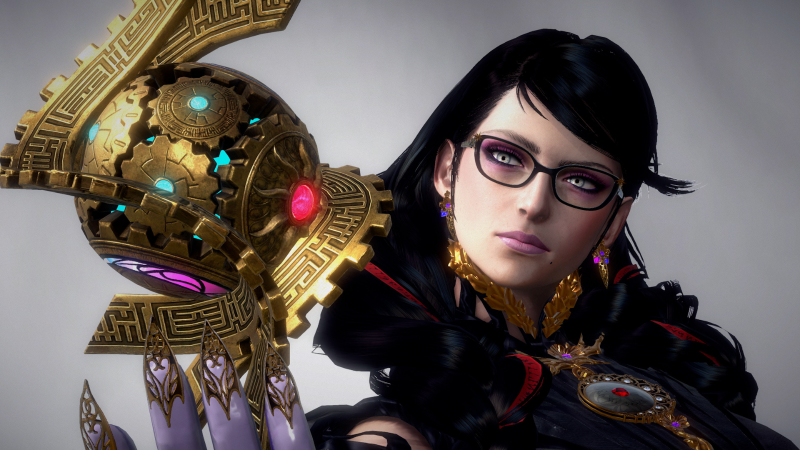
Reviewed on:
Switch
Platform:
Switch
Publisher:
Nintendo
Developer:
Platinum Games
Release:
October 28, 2022
Rating:
Mature
By the end of Bayonetta 3’s third chapter, it’s operating on a scale that dwarfs most video games. Buildings twist and crumble like flimsy plastic, giant craters pock-mark the earth, and mountain-sized creatures level entire cities; the bombastic culmination of an opening three hours that feel like they’re running a mile a minute; a never-ending barrage of stimuli.
It’s loud, obnoxious, and frankly a bit exhausting. And I was hootin’ and hollerin’ the entire time.
The Bayonetta series has always been at its best when you’re staring slack-jawed at your TV, repeatedly muttering, “What the hell is happening?” The series is excessive by nature in terms of violence, action, and sexuality. Rapid and repeated combos lead right into flashy, bloody, and extravagant animations, all bookended by goofy cutscenes where the titular witch flaunts her sex appeal, using it to distract, taunt, and encourage those around her.
Bayonetta 3 is, of course, no different. From its opening seconds, you’re thrown into large-scale fights necessitating you juggle numerous enemies at once while switching weapons, summoning giant monsters, and dodging attacks. And to that end, when you’re playing as Bayonetta, it’s the best the series has ever felt. For more than 12 hours, I never tired of her combat, happily welcoming every new wave of enemies or difficult boss.
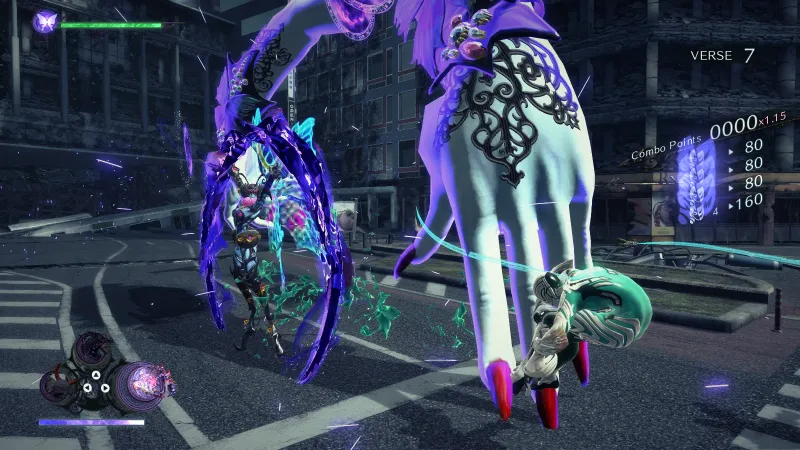
This is largely due to how Bayonetta 3 changes the series’ formula. The game no longer relegates Infernal Demons (basically large monsters Bayonetta summons to fight alongside her) to cutscenes at the end of a boss fight; they’re an entire mechanic. So long as you’ve filled your magic gauge, you can summon one of these beasts, called Demon Slave here, almost whenever you want and control them while you fight. Somewhat against their intended use, I mainly used mine as finishing moves. Capping off a combo with a massive attack from one of my four equipped monsters always felt powerful and weighty and went a long way in leveling the odds against the game’s many, many bosses. For the entirety of Bayonetta 3, it’s constantly throwing Infernal Demons your way, and I loved testing out each new addition. That said, outside of gameplay-specific sections, I mainly went back to the first two the game gives you, Gomorrah and Madama Butterfly, but that’s more an issue of my complacency than a lack of viable variety.
Perhaps the defining characteristic of Bayonetta 3 is an absurd amount of options and variety. Equal to the massive amount of Demon Slaves is Bayonetta’s weapons, each with its own gimmick, strength, and disadvantage. I mainly stuck to the lightning-fast, far-reaching Ignis Araneae Yo-Yo as my primary weapon, with the massive Dead End Express hammer-saw hybrid for slower but heavier attacks. Quickly striking with the former, dodging to trigger Bayonetta’s signature Witch Time (which slows everything but you), then slamming enemies with my massive hammer before summoning an Infernal Demon as a finisher was constantly entertaining. If anything, I wish there were more encounters. I often dropped most normal enemies after only a couple of big combo strings, leaving me to rush to find the next idiot to beat up.
Bayonetta 3’s 14 chapters constantly fluctuate between settings, sending you quite literally around the world and then some. From Japan to New York to Egypt, to beyond the reaches of space and time, every level has a unique visual palette and core conceit. I loved figuring out where in the world I was going next, but more than that, I loved the ending of each chapter, which featured a bombastic, larger-than-life setpiece that more often than not completely flattened the level you just explored. These include massive kaiju battles (a personal favorite), a fight high above the Earth’s stratosphere where a God-sized being blows bubbles at their opponent, and a literal battle of operatic proportions, among others. Some sequences are better than others, but they’re all a spectacle, so for the few that don’t feel quite as good, at least they’re fun to look at.
This all moves along at an incredible speed. Bayonetta’s pace is nearly non-stop, constantly throwing new enemies, bosses, and setpieces at you and asking you to deal with them. It’s overwhelming, and I loved it. Bayonetta 3 never wants you to be bored and does everything in its power to keep your eyes glued to your TV or Switch screen, no matter how exhausting that might be.
For what it’s worth, Bayonetta 3’s story is the most comprehensible in the series. Which is to say it’s not largely gibberish. Bayonetta is charming throughout, as is most of the cast of returning characters, such as Jeanne, Luka, and Rodin, but the larger narrative is a rote multiverse story. Some big bad man is trying to seize control of the various dimensions to control space and time. This introduces multiple different Bayonettas (a fun narrative way to give you those aforementioned different weapons), and there’s a late-game twist that neatly alters the Bayonetta lore. For the most part, though, the narrative is largely forgettable beyond surface entertainment value.
The story does, however, introduce the weakest parts of Bayonetta 3: all the levels in which you don’t play as Bayonetta. Early on, the new character Viola is introduced, a young punk from a different dimension who needs Jeanne and Bayonetta to help her save the multiverse. This sends Jeanne on a mission to find a scientist to help the trio. Jeanne’s levels play out as a stealth-focused side scroller, though it’s never all that engaging beyond running from point A to B and occasionally fighting a boring boss.
The handful of Viola’s levels are mechanically interesting but don’t nail the landing. Viola is a hack ‘n’ slash-focused character, and her Witch Time is tied to a parry rather than dodge. That parry window is incredibly tight and my opening hours with the new witch were frustrating until I finally got the hang of it, at which point it became only slightly more fun. She does have her own Demon Slave, a giant cat named Cheshire (a nod to previous games), that came in handy when I just wanted to brute force my way through levels.
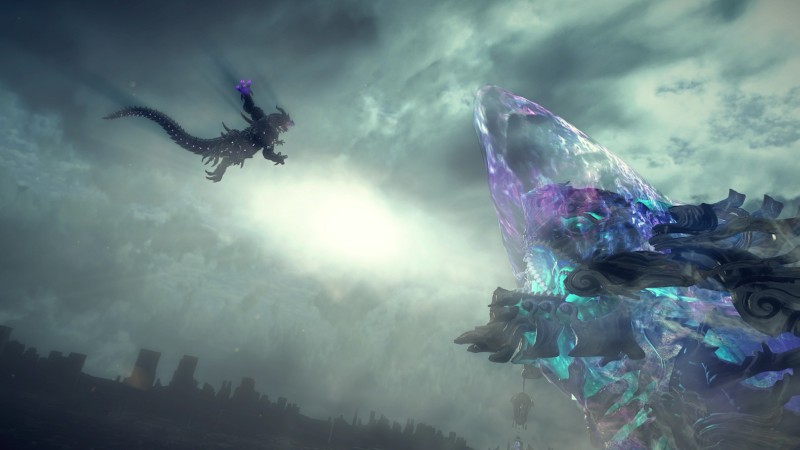
I like the idea of introducing new playable characters to the Bayonetta series, but Viola did nothing for me. Cosmetically, she’s an office worker’s approximation of a punk rocker, more Spencer’s Gifts than 924 Gilman Street. But even then, she’s bland and uninteresting. The game forces you to spend numerous hours playing as her, and I struggle to think of a single defining characteristic other than her corny mall punk aesthetic. Viola being bland and forgettable is unfortunate because despite the series’ often lackluster storytelling, it has always featured incredibly fun characters. Considering the implication that Viola may play a much larger part in potential upcoming games, I’m disappointed she doesn’t match the charm of Bayonetta.
But that’s a small complaint at the bottom of a mountain of compliments. Bayonetta 3, for the vast majority of its runtime, is an absolute blast. It’s bombastic, over-the-top, and extravagant for the sake of extravagance, leaving ruins, literally, in its wake. I’m already going back through each level trying for better scores, and I have no immediate plans of stopping. I may be hesitant about the series’ future, but at present, this is the best Bayonetta has ever been.
Score:
8.25
About Game Informer’s review system
Source: Game Informer Bayonetta 3 Review – For Extravagance's Sake


